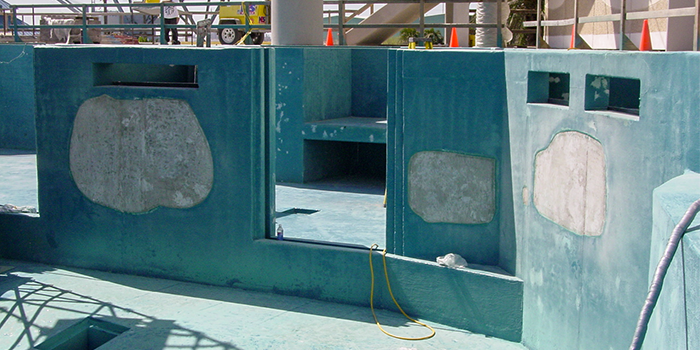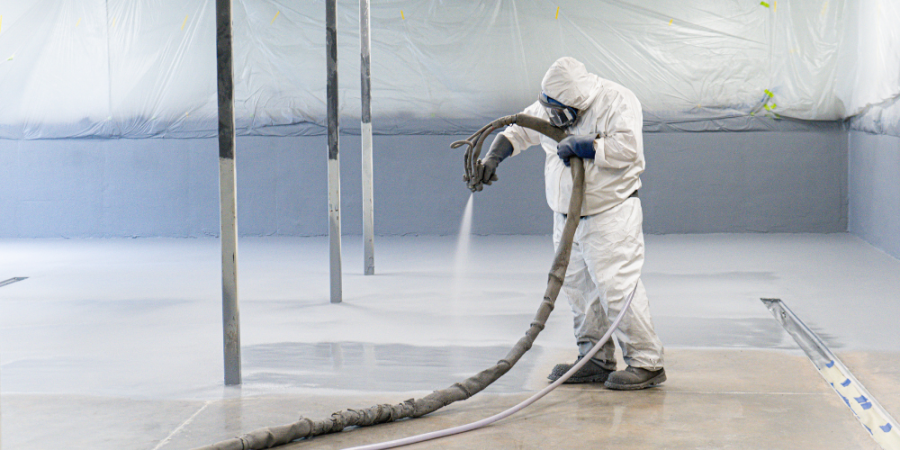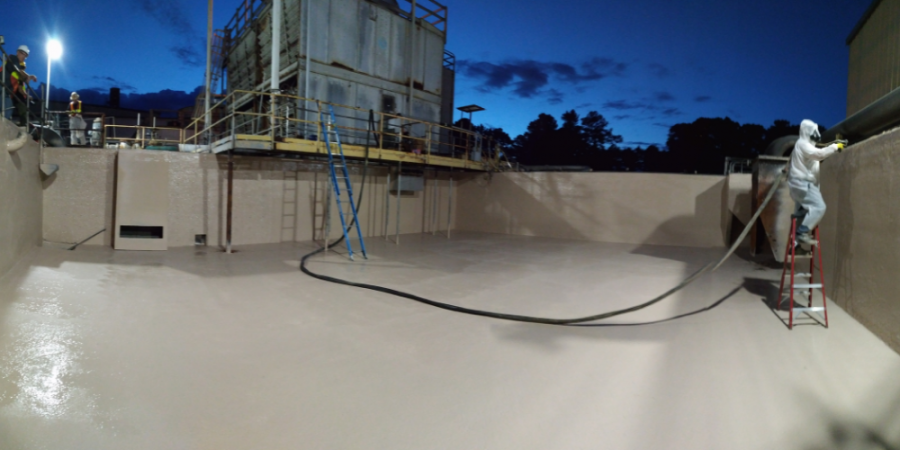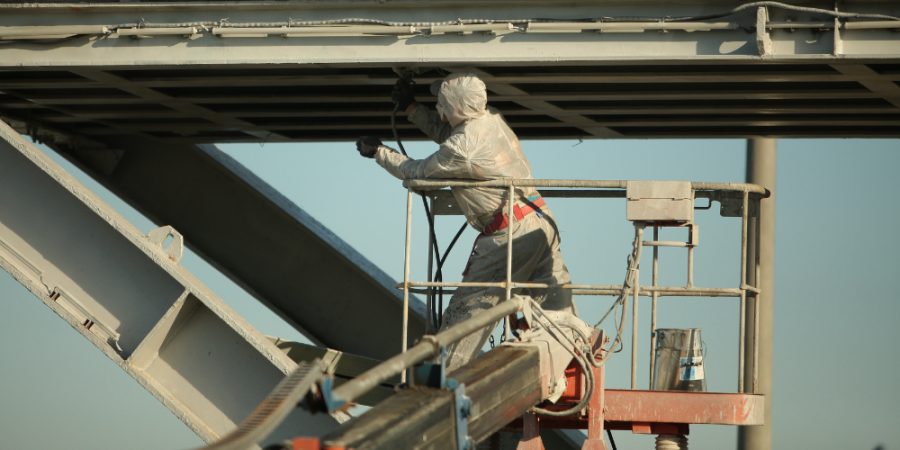Specifications and Polyurea Elastomeric Coating & Lining and Spray Foam Work


SPRAY FOAM MAGAZINE – Before a contractor or applicator can begin the necessary work of applying a polyurea elastomeric coating or spray foam system, some guidance or direction must be provided for the project. This information must be correct and understood as well as applicable to the current scope of work. While it seems that much of the information being provided in the polyurea industry is verbal or short written instructions, this is not the norm for the general coating and lining industry.
Each application project should be accompanied by a detailed specification. A specification is a written, LEGAL document that details mandatory technical requirements of application work involving the use of these protective systems, including polyurea and spray foam systems. This document is crucial to the success of that work, timely completion and it is important to follow that specification. This is the “rules of the game” since so many like to use this term “Game Changer,” if you will.
A good specification is the basic foundation of any construction, maintenance, coating and lining or spray foam project. Without one, no one can be completely sure what work needs to be performed. But to some, specifications might seem like a confusing document if not prepared properly.
While attending one of the numerous training courses in the past, the following information was provided in one of the training slides related to specifications, and I felt is appropriate here. This is from Ready Written Specifications, Leicester B. Holland and Harry Parker (1926).
“Specifications are a load assumed with bravado, borne with groans, and shifted, when they can be shifted, universally without regret. The architect who is not a specialist in writing them, is apt to look on them as a quasi-magic formulae, which he [sic] does not fully understand nor really care to understand but repeats dutifully and wearily, as a ritual handed down to him by wiser men.”
Quite a bit of truth in that paragraph, but bottom line, specifications are instructional LEGAL documents on how to proceed with a coating or spray foam installation – Work Results! But, …Bid Documents are NOT a Specification. Bid documents should follow the instructions of a well written specification.

Often, a specification has been prepared from a template of an earlier specification and many areas within that spec may be outdated or inappropriate for the current work. This “cut and paste” approach is often used but omission, duplications or not meeting all the requirements of the present work can be noted. Each project should require a specifically designed specification for the work and location involved.
Specifications shall also address required safety and environmental impact implications.
And of course, the most important with regard to polyurea coating and lining systems is the material selection. Is the polyurea system designed and suitable for the application area of the project specification? Not all polyurea systems are created equal, remember?
Typically, an architect or engineer specializing in that type of work, prepares specifications. However, clear communication between polyurea technology suppliers and these architects or engineers is necessary to ensure that the polyurea technology is suitable for that type of work. But many specifications are commonly prepared by the polyurea coating / lining system supplier and will be specific about the product they supply. And in some cases, they can be prepared by the competent contractor.
Good specification writers follow the “four Cs” in developing their documents.
Clear – reduce ambiguity and use terms that are widely understood and well defined
Correct – use terms correctly
Concise – reduce embellishment and remove marketing hype
Complete – say everything that needs to be said related to the project.
In general, the basic three components of a specification are as follows:
Part 1: General
Scope of Work
References and Standards
Definitions
Submittals
Quality Assurance
Delivery, Storage and Handling of Materials
Pre-jobsite Visit, Conference and Project Conditions
Part 2: Products
Now we get into the meat of what type of polyurea products may be required. This may include actual named polyurea product descriptions or a type of polyurea product based on certain performance characteristics. In many cases, a specific polyurea product is named or specified either due to past experience or certain qualifications the material has in the application area of the project specification.
For example, Polyurea System A was specified by the Department of Energy for gondola car lining work, used to transport low level nuclear waste, due to the high tensile strength of the material. During application of the lining system, test samples were also sprayed to ensure the polyurea system met the performance criteria noted in the specification. Evaluation of these samples gave the following results displayed in TABLE 1.
At first, one would say that the material has not been processed correctly hence the low physical properties. However, the system was processed according to the polyurea system supplier’s recommendations. Another item to note with the project as well is that the contractor was also shipped small pails of another material to mix into the resin side of the polyurea system before application of the Polyurea System A. This was not included in the specification. This “formulating in the field” has led to numerous application failures.
From this application, the polyurea product being used does not meet specifications. While the application work should have been halted, all the lining work was continued and all cars within the scope of the project were lined. This could potentially lead to a serious failure of this lining work.
Part 3: Execution
Now that we have identified the scope of the work, and the products to be used, we are “ready” to move on to the installation. This section will detail all surface preparation that will be required as well as application of the system.
Once we have addressed the specified surface preparation, it is time to apply the coating or spray foam system. Here, the specification will note the required minimum film thickness of the polyurea coating system. On a recent polyurea lining project, there was some issue with the application work that called for an inspection of the site. One of the items monitored was applied film thickness of the system, and compared to the specified thickness. Table 2 notes the results of that evaluation.
These results show that somewhere there may have been a misunderstanding of what the specification was for this project. Clearly the applicator has bid less than was specified but applied almost three times the amount of system that was bid. This is due primarily to the applicator’s lack of experience on this type of project.
This section may also note what other field quality control evaluation may be required. This could include adhesion testing as well as holiday or spark testing. Whichever the case, this must be done in a specified sequence.
Conclusion:
A coating, or spray foam specification is a recipe or cookbook on how an application project should progress. It describes the quality of materials and method of construction as well as defining the amount of work. Just like in cooking, if a step is omitted or changed, one may not be completely sure of the outcome or result of that work. The owner, general contractor and contractor / applicator must be familiar with all sections of the specification before the work begins.
When properly prepared, the specification is like a road map for that well deserved vacation one might be taking. When followed, all seems to go well with only the minor issues that may come up. If a specification is poorly written, or worse yet not followed, a failure is inevitable. It may not be the polyurea product that failed, but it is a failure none the less and it hurts our industry.
Bottom line, READ the specification before you bid and start the work. If it is in the spec, you shall perform that work noted! If not written properly, address before the bid is submitted to clarify, because once you start, you bought it!
For use by SprayFoamMagazine.com & Spray Foam Magazine
Disqus website name not provided.










































